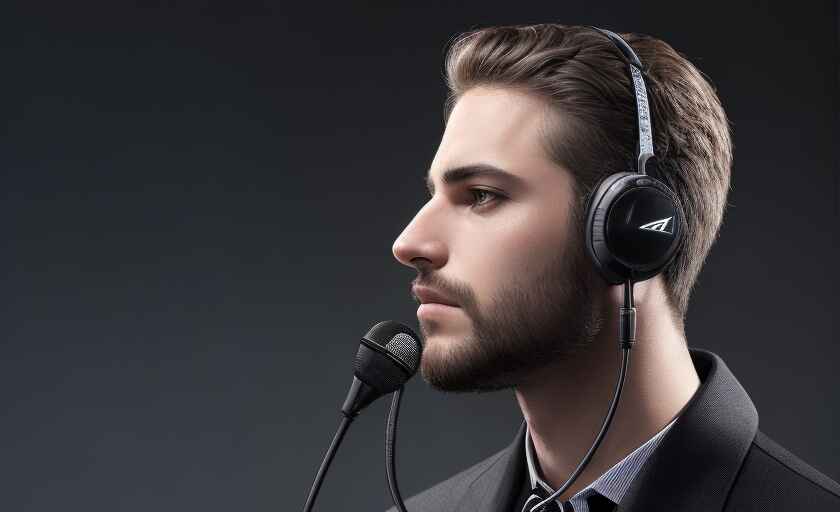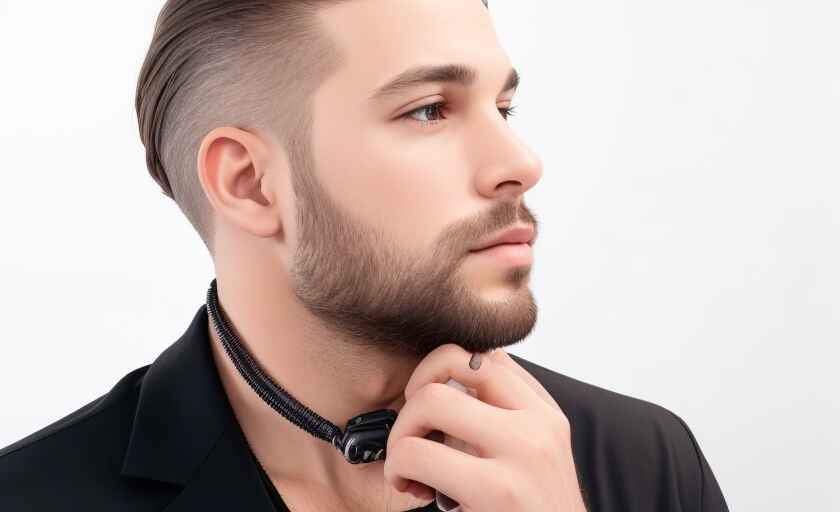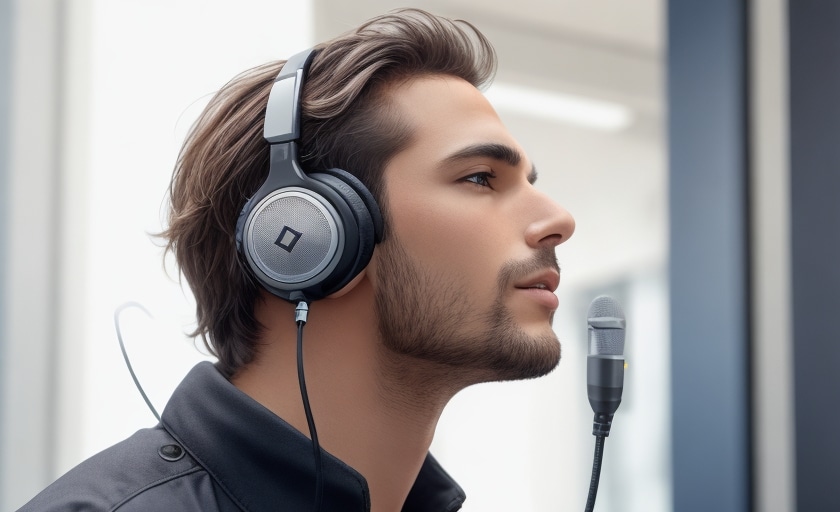Can Sennheiser Wireless Microphone Have 2 Lavalier Microphones Attached?
Short answer: No, but don’t fret! We’re about to embark on a wireless audio adventure, exploring why Sennheiser says “one mic, one receiver” and uncovering the solutions to your audio multitasking dreams.
Ready for double the mic-dropping fun? Keep reading!
Can Sennheiser Wireless Microphone Have 2 Lavalier Microphones Attached?

No, a Sennheiser wireless microphone cannot have two Lavalier microphones attached to it. According to the Sennheiser, each microphone that will be in use will need a dedicated receiver, meaning one microphone to one receiver.
However, Sennheiser offers a range of Lavalier microphones that can be used with their wireless systems.
Understanding Sennheiser Wireless Microphones
Sennheiser wireless microphones are renowned for their exceptional audio quality, reliability, and user-friendly design. They have become an integral part of various professional settings, including:
Broadcasting
In the world of broadcasting, capturing clear and uninterrupted audio is paramount.
Sennheiser wireless microphones are trusted by broadcasters worldwide to deliver impeccable sound quality during live broadcasts, ensuring that viewers and listeners receive a seamless audio experience.
Live Performances
Musicians and performers value the freedom of movement that wireless microphones provide.
Sennheiser wireless microphones enable artists to move around the stage without being tethered to cables, enhancing their overall performance and engagement with the audience.
Public Speaking
Public speakers and presenters rely on Sennheiser wireless microphones to convey their message effectively.
These microphones offer a range of features, such as noise cancellation and long battery life, ensuring that the speaker’s voice is heard loud and clear.
Content Creation
In the digital age, content creators demand high-quality audio for their videos and podcasts.
Sennheiser wireless microphones have become a preferred choice for YouTubers, podcasters, and vloggers, elevating the production value of their content.
The versatility of Sennheiser wireless microphones extends to various models designed to cater to specific needs.
From handheld microphones to clip-on lavalier microphones, Sennheiser provides a wide range of options for different applications.
Lavalier Microphones: What Are They?

Lavalier microphones, often referred to as lapel microphones or lav mics, are compact, omnidirectional microphones that can be discreetly attached to clothing, typically near the speaker’s mouth.
These microphones have gained popularity due to their unobtrusive design and ability to capture clear and natural-sounding audio.
Typical Applications
Lavalier microphones find applications in a myriad of scenarios, including:
- Interviews: News reporters and journalists frequently use lavalier microphones to capture interviews on the go.
- Presentations: Speakers and presenters wear lav mics to ensure their audience hears every word clearly.
- Film and TV: In filmmaking and television production, lavalier microphones are often used to capture dialogue without the need for visible boom mics.
- Live Events: Entertainers, hosts, and emcees employ lav mics for amplified and unobtrusive sound.
Advantages of Lavalier Microphones
Lavalier microphones offer several advantages that make them indispensable in the world of audio recording:
- Discreetness: Their small size and ability to clip onto clothing make them inconspicuous and ideal for video recording.
- Minimized Noise: Lavalier microphones are designed to capture sound from the speaker’s vicinity while minimizing ambient noise.
- Freedom of Movement: Speakers and performers can move freely without worrying about microphone placement.
Gain valuable knowledge on Reboot My Wireless Headset Microphone through my article: How Do I Reboot My Wireless Headset Microphone?
The Need for Multiple Lavalier Microphones
In the world of audio recording, there are situations where using two lavalier microphones becomes not just advantageous but necessary to capture clear and comprehensive audio.
Let’s delve into some scenarios where the use of dual lavalier mics proves to be highly beneficial:
Interviews
Interviews often involve multiple participants, and ensuring that each speaker’s voice is captured with clarity is vital.
Using two lavalier microphones allows for individual microphone placement on each interviewee, resulting in distinct and well-separated audio tracks. This setup ensures that the interviewer’s questions and the interviewee’s responses are recorded without audio overlap.
Panel Discussions
Panel discussions bring together multiple speakers who share their insights and perspectives on a particular topic. In such settings, it’s essential to equip each panelist with their own lavalier microphone.
This arrangement prevents one speaker’s voice from overshadowing another’s and guarantees that all participants are heard clearly, even when they speak simultaneously or interrupt each other.
Stage Performances
In live stage performances, such as theater productions or musicals, actors and performers often require lavalier microphones to amplify their voices.
Using two lavalier mics on a performer can help capture not only their spoken lines but also their singing or dialogue with other cast members. This approach ensures that the audience can enjoy a well-balanced and immersive audio experience.
Compatibility with Sennheiser Wireless Microphones

Now that we understand the need for multiple lavalier microphones, let’s explore whether Sennheiser wireless microphones are designed to accommodate such setups.
Sennheiser offers a diverse range of wireless microphone systems, each tailored to specific needs.
These systems include various transmitters and receivers designed to work seamlessly with Sennheiser microphones, including lavalier microphones.
However, the ability to connect multiple lavalier microphones to a single Sennheiser wireless transmitter can vary depending on the model.
Different Sennheiser Models
Sennheiser offers wireless microphone systems with different capabilities, and it’s crucial to choose a model that suits your requirements:
- Single-Channel Systems: These systems are designed for a single microphone connection, making them suitable for solo performances or single-speaker scenarios.
- Dual-Channel Systems: Dual-channel wireless systems allow for the simultaneous use of two microphones. This setup can accommodate two lavalier microphones, making it ideal for interviews or situations where two sources need to be captured independently.
- Multi-Channel Systems: Sennheiser also offers multi-channel wireless systems capable of handling multiple microphones simultaneously. These systems are suitable for larger setups, such as stage productions or conferences.
It’s essential to select a Sennheiser wireless microphone system that matches your specific requirements for using multiple lavalier microphones.
Using a Mixer or Receiver
To connect two lavalier microphones to a Sennheiser wireless system, you’ll typically need a mixer or receiver with multiple input channels. Here’s a brief overview of the process:
- Select the Right Sennheiser Model: Ensure you have a Sennheiser wireless microphone system with the necessary number of channels. If you’re using two lavalier microphones, a dual-channel system is ideal.
- Microphone Placement: Position the lavalier microphones on the respective speakers, ensuring they are securely attached and not obstructed by clothing or accessories.
- Connect the Microphones: Plug the lavalier microphones into the transmitter units that come with your Sennheiser wireless system. Make sure each microphone is connected to a separate channel on the transmitter.
- Receiver Setup: On the receiver side, configure the channels to correspond to the microphones you’ve connected. This may involve setting the receiver to dual-channel mode and assigning each channel to a specific microphone.
- Audio Mixing: If your receiver has built-in mixing capabilities, you can adjust the audio levels of each microphone to achieve a balanced sound. Alternatively, you can connect the receiver to an external audio mixer for more advanced control.
- Monitor and Test: Before your actual recording or performance, monitor the audio through headphones to ensure that both lavalier microphones are functioning correctly and that the audio quality meets your expectations.
Considerations for Audio Quality
Maintaining high audio quality when using two lavalier microphones is essential to produce professional and clear recordings. Here are some considerations to help you achieve optimal sound:
Potential Challenges
- Phase Interference: When two microphones are placed too close to each other, there is a risk of phase interference, leading to audio cancellation or degradation. To avoid this, ensure an adequate distance between the microphones.
- Audio Clipping: Overloading the microphones with loud sounds can result in audio clipping, which leads to distorted sound. Adjust the microphone sensitivity or use windshields to mitigate this issue.
- Background Noise: Be mindful of background noise, as both lavalier microphones will capture ambient sounds. Minimize noise sources or use noise reduction software during post-production to enhance audio quality.
Addressing Challenges
- Microphone Placement: Position the lavalier microphones strategically to capture the speaker’s voice effectively while minimizing clothing rustle or unwanted noise.
- Equalization: Use equalization (EQ) to fine-tune the frequency response of each microphone, ensuring a balanced and natural sound.
- Monitoring: Continuously monitor the audio during recording to catch and address any issues promptly.
Find comprehensive information on Canon 80d Camera Have Wireless Microphone in my article: Can Canon 80d Camera Have Wireless Microphone?
Cable Management and Placement
Effective cable management is crucial when using two lavalier microphones to prevent tangles and distractions. Consider the following tips:
- Use cable clips or adhesive cable organizers to secure the microphone cables discreetly along the speaker’s clothing.
- Ensure that the cables are positioned in a way that allows the speaker to move comfortably without interference.
- Use color-coded or labeled cables to easily identify and connect the correct microphone to the transmitter.
- Keep excess cable length coiled and secured to prevent it from dangling or getting caught on objects.
Alternatives to Dual Lavalier Microphones
While dual lavalier microphones offer precise audio capture, there are alternative microphone setups that can achieve similar results when using Sennheiser wireless systems:
Shotgun Microphones
Shotgun microphones are highly directional and excel at capturing sound from a specific direction.
They are suitable for scenarios where you need to focus on a single speaker, such as solo interviews or presentations.
Handheld Microphones
For situations where multiple speakers share a microphone, handheld microphones can be a practical choice.
They allow speakers to pass the microphone back and forth during discussions or panel sessions.
FAQs About Can Sennheiser Wireless Microphone Have 2 Lavalier Microphones Attached
Can you use 2 wireless microphones at once?
Yes, you can use 2 wireless microphones simultaneously.
Ensure they operate on different frequencies to avoid interference, and your receiver can handle multiple channels.
How many wireless microphones can be used at once?
The number of wireless microphones that can be used simultaneously depends on the system’s capacity.
Some systems support up to 16 microphones, while others may handle more or fewer.
How do you use a Sennheiser wireless lavalier microphone?
To use a Sennheiser wireless lavalier microphone, connect the lavalier mic to the transmitter, set the receiver to the same frequency, and attach it to your recording device. Ensure both are powered on and paired.
How many wireless mic transmitters can you have transmitting at the same time to the same single receiver?
The number of transmitters a single receiver can handle varies by model. Typically, it can handle 2 to 8 transmitters, but consult your receiver’s manual for precise details.
Can I pair two microphones to one device?
Yes, you can pair two microphones to one device if the device supports multiple audio inputs.
Use a mixer or adapter to connect both microphones to the device.
How can I use two microphones at the same time?
To use two microphones simultaneously, connect them to a mixer or audio interface with multiple inputs.
Adjust levels and settings as needed for your recording or live sound setup.
What is Sennheiser lavalier transmitter?
A Sennheiser lavalier transmitter is a small device that attaches to a lavalier microphone and wirelessly transmits the microphone’s audio signal to a receiver, allowing for untethered mobility during recordings or presentations.
Where do you plug a lavalier mic?
Plug the lavalier microphone into the input jack of its transmitter.
Ensure it’s securely connected, and the transmitter is powered on and set to the appropriate frequency for the receiver to pick up the signal.
Final Thoughts About Can Sennheiser Wireless Microphone Have 2 Lavalier Microphones Attached
In conclusion, Sennheiser wireless microphones are not designed for direct attachment of two lavalier microphones to a single transmitter. Each microphone typically requires its dedicated receiver for optimal performance.
However, Sennheiser offers a diverse range of compatible lavalier microphones that can be utilized with their wireless systems.
While the concept of attaching two lav mics to a single transmitter may seem appealing, it’s crucial to adhere to Sennheiser’s recommended configurations to ensure reliable and high-quality audio capture.
With the right microphone choices and configurations, Sennheiser users can achieve professional-grade sound recording in a variety of scenarios.
